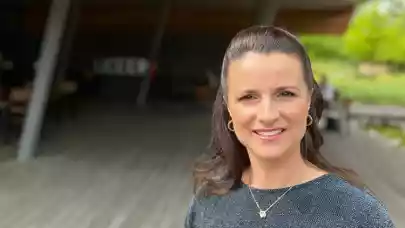
Decarbonisation roadmap, eco-certification in the residential sector, the future of the circular economy and other ecological trends in today’s construction world - these were some of the topics that we discussed in an interview with Iveta Králová, Chair of the Czech Green Building Council.
In January this year, you were elected as Chair of the Czech Green Building Council (CZGBC), which is part of a global network of councils covering about 70 countries around the world. What are your key priorities as Chair of the organisation?
I strive to raise awareness about the benefits of green building practices among various stakeholders, including architects, engineers, contractors, developers, and the general public. It has to do with engaging and involving various stakeholders and thereby strengthening the membership base. It is also crucial for me to foster collaboration among the Council’s members and networking opportunities within the green building community.
Within the real estate industry, there is an increasingly strong focus on reducing the carbon footprint of buildings. What advice and best practices can the CZGBC provide for developers and asset managers?
By providing knowledge and support in these areas, the CZGBC assist developers and asset managers in adopting sustainable practices, reducing carbon footprints, and creating greener and more resilient buildings. The Council facilitates networking opportunities and organizes special events called Green Walk Green Talk – commented tours in buildings where sustainable and innovative solutions are presented. The solutions include effective energy and water management, renewable energy integration, the use of sustainable and low-carbon materials during construction and the significance of indoor environmental quality for occupant health, well-being, and productivity.

Iveta Králová
Chairwoman of the Board
Czech Green Building Council
The CZGBC also is currently preparing a decarbonisation road map for buildings. Can you tell us about this project?
The Zero Carbon Roadmap is a strategic view of the direction of the construction sector and the building sector towards sustainability and carbon neutrality in the Czech Republic.
The roadmap will include proposals for specific measures for the relevant stakeholders, namely the government and local authorities, developers, investors, building owners, designers and architects, manufacturers of construction materials and technologies, building managers, financial institutions, non-governmental organizations, and the academic sphere. The document will also contain recommendations regarding the overall legislative framework for sustainable construction, potential financing mechanisms, and, for example, changes to the education system, skill enhancement, and public awareness raising. Thanks to the roadmap, companies will be able to draw inspiration for developing their carbon neutrality strategies.
For commercial buildings, tenants and investors are already demanding eco-certificates. Do you think this will also extend to the residential sector?
Yes, the trend of eco-certificates for buildings is already expanding to the residential sector as well It is a natural outcome as many residential projects have been built with highly sustainable standards and the certification is a formal confirmation of the building quality. There is a growing awareness and concern among individuals about sustainability and environmental impact, and this influences their preferences and choices when it comes to housing.
The CZGBC is also promoting healthy environments in schools. What does this mean in practice?
The Healthy School project is a reaction to the non-conceptual reconstruction of schools related to the first wave of subsidies programme in 2017 focused only on the energy efficiency in buildings. These first grant programs helped schools to reduce energy consumption, but at the same time, the buildings became almost sealed with insufficient air quality. The grant programme did not include the improvement of the quality of acoustics and lighting. The overall quality of the indoor environment in school facilities is crucial, especially because of the demands for concentrated work and cognitive learning processes. Within the project, the Council managed to negotiate the extension of the grant programme with solutions for acoustic and lighting quality. The CZGBC also prepared and published a methodology for public procurement focused on key points and recommendations for a healthy indoor environment in schools. Two pilot case studies were conducted and promoted including measurements of parameters in schools.
The last few years of crises have caused a shortage of building materials and consequently raised their prices. Is the circular economy the key to solving this situation?
While the circular economy is not a standalone solution to the shortage and rising prices of building materials, it offers a comprehensive framework to optimize resource use, reduce waste, and create a more sustainable construction industry. By embracing circular economy principles, stakeholders can minimize their reliance on scarce resources, foster innovation, and build resilience in the face of material shortages and price fluctuations.
How do to encourage architects, developers and asset managers to use the circular economy in the Czech Republic?
It requires a combination of awareness-building, education and policy support (e.g. tax incentives, procurement policies supporting circular solutions, and the inclusion of circular economy principles in building codes and regulations which is missing in the Czech Republic nowadays), capacity-building, financial incentives (grants, loans and subsidies projects that incorporate circular design principles), and collaborative efforts to create a favourable environment for circular approaches in the construction industry.
Can you mention any successful projects that have already been implemented using the circular economy?
The most recent and prominent project is the “remolition” of Mercuria – the old administrative building that is being dismantled with the maximum possible reuse of building material.



